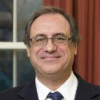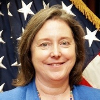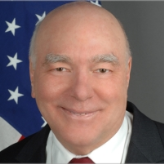Paraguay
Paraguay is a landlocked country in South America, bordered by Brazil, Bolivia and Argentina. It was originally settled by semi-nomadic Guaraní-speaking tribes, and Spanish explorers discovered Paraguay’s capital city of Asunción in 1537, ruling the country until the early 1800s. Various wars with neighboring countries destabilized the economy during the 18th and 19th centuries. In 1954, General Alfred Stroessner gained power and ruled for over 35 years, which served to isolate Paraguay from the world community. Since Stroessner’s overthrow in 1989, Paraguay has struggled to incorporate democratic principles into its political system. New president Fernando Lugo has pledged to work on the country’s considerable corruption and impunity problems and create economic opportunities for all.
Lay of the Land: A landlocked country of low elevation in central South America. There are rolling plains and dense forests in central Paraguay, while the northwest is a scrubby, barren wilderness known as the Chaco, which Paraguay won from Bolivia in the 1930s.
Paraguay was originally settled by semi-nomadic Guaraní-speaking tribes, which were known for their warrior traditions. As part of Pre-Colombian civilization, these tribes practiced polytheistic religions that were later incorporated into the Christian beliefs of their conquerors.
Between World War II and the late 1970s, foreign relations between Paraguay and the United States were largely based on security interests, trade and investment, and development assistance. Alfredo Stroessner, hoping to maimtain the support of the US government, consistently voted in line with the US on security issues.
The US and Paraguay have partnered on several initiatives to reduce the flow of narcotics, combat money laundering and human trafficking, counter terrorism, and bolster intellectual property rights by reducing piracy. The US has also been involved with helping Paraguay manage its tropical forest and river resources and to engage in sustainable development.
US exports to Paraguay totaled $1.8 billion in 2010, while US imports from Paraguay totaled $62.2 million.
Cargill’s New Port Raises Controversy in Paraguay
According to the State Department, “There were reports of killings by government officials and police that were not always investigated or prosecuted. Government agents reportedly abused some prisoners with impunity. Prisons were routinely overcrowded and did not meet international standards. Political interference, corruption, and inefficiency in the judiciary were common, as was lengthy pretrial detention. Government corruption remained a serious problem. Violence against women continued, as did discrimination against women, persons with disabilities; indigenous persons; and lesbian, gay bisexual, and transgender (LGBT) individuals. Trafficking in persons persisted. Exploitation of child labor and violations of worker rights also remained serious problems.”
Charles A. Washburn
 Pfannl, Fernando
Pfannl, Fernando
The landlocked South American nation of Paraguay, whose legislature impeached its president last year in what many countries termed a “legal coup,” has sent a new ambassador to the U.S. to try to get relations back on a more normal footing. Officially appointed on December 26, 2012, Fernando A. Pfannl Caballero presented his credentials to President Barack Obama on January 14, 2013, succeeding Rigoberto Gauto Vielman, who had served since February 2010.
Born July 13, 1955, in the capital city of Asunción, Pfannl earned a degree in Sociology and a Certificate in Political and Social Economy at the Université Paris Ouest Nanterre La Défense (formerly the University of Paris X – Nanterre).
In February 1989, when a military coup overthrew the brutal dictatorship of Gen. Alfredo Stroessner, Pfannl served as a spokesman for the democratic opposition.
Pfannl went on to serve as a senator representing the Liberal Party from 1993 to 1998, serving on the Senate committees for Foreign and International Affairs; Economy, Development and Integration; Agrarian Reform; Energy, Natural Resources, Population and Sustainable Development; and on two bicameral or joint committees, on the Budget and on Investigations. He also served as chief of staff of the Municipality of Asunción from 1998 to 2001.
After the election in 2008 of left-leaning President Fernando Lugo, whose win overturned the power of the conservative Colorado Party, which had held power—including under Stroessner—for 61 years—Pfannl served as chief of staff for Vice President Federico Franco.
In 2012, conservative elements in Paraguay's government engineered what Paraguay's neighbors Brazil, Argentina, Ecuador, Colombia, Chile and others, termed a coup, by impeaching Lugo and giving him only two hours to prepare a defense. Franco became president in June, naming Pfannl interim head of the Ministry of Information and Communication, an important post in the days after the coup. Franco later named Pfannl Minister of Planning and Economic and Social Development.
Pfannl speaks Spanish, French and English.
To Learn More:
Candidato a Embajador ante EE UU anunció su propuesta en el Senado (Nominee for U.S. Ambassador enunciates his views in the Senate) (La Nacion)
Caso Ricardo Canese vs. Paraguay, Cuestionario para el testigo Fernando Pfannl (Canese vs. Paraguay, Questionnaire of witness Fernando Pfannl) (pdf)
- Table of Contents
- News
- Overview
- Basic Information
- History
- Newspapers
- History of U.S. Relations with Paraguay
- Current U.S. Relations with Paraguay
- Where Does the Money Flow
- Controversies
- Human Rights
- Debate
- Past Ambassadors
- Ambassador to the U.S.
- Embassy Web Site in the U.S.
- Comments
- Leave a comment
U.S. Ambassador to Paraguay

On July 16, 2014, the Senate Foreign Relations Committee sent the nomination of Leslie Ann Bassett to be U.S. ambassador to Paraguay to the full Senate for its consideration. Bassett was nominated to the post by President Barack Obama on June 4. If confirmed, it will be the first ambassadorial post for Bassett, a career Foreign Service Officer.
Bassett came from a military family. Her grandfather was a general in the U.S. Army; her father graduated from the U.S. Naval Academy; and her two uncles served in the Vietnam War.
After graduating from the University of California-Davis in 1981 with a bachelor’s degree in international relations, Bassett worked as a copy editor for Computer Business News in Boston.
After joining the Foreign Service, her early assignments included posts in Tel Aviv, Israel; San Salvador, El Salvador; Durban, South Africa; and Managua, Nicaragua. It was a rough initiation to the diplomatic corps. According to an article (pdf) Bassett wrote for Foreign Service Journal in 2010, she was shot at and took part in an embassy evacuation in El Salvador; her house was ransacked during her time in Nicaragua and she narrowly escaped a mob; and she served in Israel during the second intifada. Back in Washington, Bassett also served as desk officer in the Bureau of African Affairs and an assistant in the Bureau of Western Hemisphere Affairs.
In 1994, Bassett was named special assistant to the under secretary of state for political affairs. The following year, she was detailed to the National Security Council. Bassett moved back to the State Department in 1996 as legislative management officer in the Bureau of Legislative Affairs and in 1997 was back as pecial assistant to the under secretary of state for political affairs. During this period, Bassett earned an M.A. in writing in 1998 from Johns Hopkins University and an M.S. in national security policy studies from the National War College in 1999.
Bassett returned to Latin America in 1999 as counselor for political and economic affairs at the U.S. Embassy in Bogota, Colombia. In 2001 she was posted to Africa as the deputy chief of mission in Gaborone, Botswana.
In 2004, Bassett was assigned to the embassy in Mexico City, first as political counselor, then in 2006 as deputy chief of mission. She was named deputy chief of mission at the U.S. Embassy in Manila, Philippines in 2009 and took a similar job in Seoul, South Korea in 2012, where she has served since.
Bassett, who has a daughter, speaks Spanish and French.
-Steve Straehley
To Learn More:
The 9th A-100 Class: A Snapshot (by Leslie A. Bassett, Foreign Service Journal) (see pages 38-41) (pdf)
Testimony before Senate Foreign Relations Committee (pdf)
State Department Cables (WikiLeaks)
morePrevious U.S. Ambassador to Paraguay

In choosing James H. Thessin as ambassador to Paraguay, President Barack Obama selected a career member of the Senior Executive Service who, previously, had never served overseas in almost 30 years with the State Department. Thessin was nominated on April 7, 2011, however he has not yet been confirmed.
Paraguay is a landlocked country in South America, bordered by Brazil, Bolivia and Argentina. It was originally settled by semi-nomadic Guaraní-speaking tribes, and Spanish explorers discovered Paraguay’s capital city of Asunción in 1537, ruling the country until the early 1800s. Various wars with neighboring countries destabilized the economy during the 18th and 19th centuries. In 1954, General Alfred Stroessner gained power and ruled for over 35 years, which served to isolate Paraguay from the world community. Since Stroessner’s overthrow in 1989, Paraguay has struggled to incorporate democratic principles into its political system. New president Fernando Lugo has pledged to work on the country’s considerable corruption and impunity problems and create economic opportunities for all.
Lay of the Land: A landlocked country of low elevation in central South America. There are rolling plains and dense forests in central Paraguay, while the northwest is a scrubby, barren wilderness known as the Chaco, which Paraguay won from Bolivia in the 1930s.
Paraguay was originally settled by semi-nomadic Guaraní-speaking tribes, which were known for their warrior traditions. As part of Pre-Colombian civilization, these tribes practiced polytheistic religions that were later incorporated into the Christian beliefs of their conquerors.
Between World War II and the late 1970s, foreign relations between Paraguay and the United States were largely based on security interests, trade and investment, and development assistance. Alfredo Stroessner, hoping to maimtain the support of the US government, consistently voted in line with the US on security issues.
The US and Paraguay have partnered on several initiatives to reduce the flow of narcotics, combat money laundering and human trafficking, counter terrorism, and bolster intellectual property rights by reducing piracy. The US has also been involved with helping Paraguay manage its tropical forest and river resources and to engage in sustainable development.
US exports to Paraguay totaled $1.8 billion in 2010, while US imports from Paraguay totaled $62.2 million.
Cargill’s New Port Raises Controversy in Paraguay
According to the State Department, “There were reports of killings by government officials and police that were not always investigated or prosecuted. Government agents reportedly abused some prisoners with impunity. Prisons were routinely overcrowded and did not meet international standards. Political interference, corruption, and inefficiency in the judiciary were common, as was lengthy pretrial detention. Government corruption remained a serious problem. Violence against women continued, as did discrimination against women, persons with disabilities; indigenous persons; and lesbian, gay bisexual, and transgender (LGBT) individuals. Trafficking in persons persisted. Exploitation of child labor and violations of worker rights also remained serious problems.”
Charles A. Washburn
 Pfannl, Fernando
Pfannl, Fernando
The landlocked South American nation of Paraguay, whose legislature impeached its president last year in what many countries termed a “legal coup,” has sent a new ambassador to the U.S. to try to get relations back on a more normal footing. Officially appointed on December 26, 2012, Fernando A. Pfannl Caballero presented his credentials to President Barack Obama on January 14, 2013, succeeding Rigoberto Gauto Vielman, who had served since February 2010.
Born July 13, 1955, in the capital city of Asunción, Pfannl earned a degree in Sociology and a Certificate in Political and Social Economy at the Université Paris Ouest Nanterre La Défense (formerly the University of Paris X – Nanterre).
In February 1989, when a military coup overthrew the brutal dictatorship of Gen. Alfredo Stroessner, Pfannl served as a spokesman for the democratic opposition.
Pfannl went on to serve as a senator representing the Liberal Party from 1993 to 1998, serving on the Senate committees for Foreign and International Affairs; Economy, Development and Integration; Agrarian Reform; Energy, Natural Resources, Population and Sustainable Development; and on two bicameral or joint committees, on the Budget and on Investigations. He also served as chief of staff of the Municipality of Asunción from 1998 to 2001.
After the election in 2008 of left-leaning President Fernando Lugo, whose win overturned the power of the conservative Colorado Party, which had held power—including under Stroessner—for 61 years—Pfannl served as chief of staff for Vice President Federico Franco.
In 2012, conservative elements in Paraguay's government engineered what Paraguay's neighbors Brazil, Argentina, Ecuador, Colombia, Chile and others, termed a coup, by impeaching Lugo and giving him only two hours to prepare a defense. Franco became president in June, naming Pfannl interim head of the Ministry of Information and Communication, an important post in the days after the coup. Franco later named Pfannl Minister of Planning and Economic and Social Development.
Pfannl speaks Spanish, French and English.
To Learn More:
Candidato a Embajador ante EE UU anunció su propuesta en el Senado (Nominee for U.S. Ambassador enunciates his views in the Senate) (La Nacion)
Caso Ricardo Canese vs. Paraguay, Cuestionario para el testigo Fernando Pfannl (Canese vs. Paraguay, Questionnaire of witness Fernando Pfannl) (pdf)
Comments
U.S. Ambassador to Paraguay

On July 16, 2014, the Senate Foreign Relations Committee sent the nomination of Leslie Ann Bassett to be U.S. ambassador to Paraguay to the full Senate for its consideration. Bassett was nominated to the post by President Barack Obama on June 4. If confirmed, it will be the first ambassadorial post for Bassett, a career Foreign Service Officer.
Bassett came from a military family. Her grandfather was a general in the U.S. Army; her father graduated from the U.S. Naval Academy; and her two uncles served in the Vietnam War.
After graduating from the University of California-Davis in 1981 with a bachelor’s degree in international relations, Bassett worked as a copy editor for Computer Business News in Boston.
After joining the Foreign Service, her early assignments included posts in Tel Aviv, Israel; San Salvador, El Salvador; Durban, South Africa; and Managua, Nicaragua. It was a rough initiation to the diplomatic corps. According to an article (pdf) Bassett wrote for Foreign Service Journal in 2010, she was shot at and took part in an embassy evacuation in El Salvador; her house was ransacked during her time in Nicaragua and she narrowly escaped a mob; and she served in Israel during the second intifada. Back in Washington, Bassett also served as desk officer in the Bureau of African Affairs and an assistant in the Bureau of Western Hemisphere Affairs.
In 1994, Bassett was named special assistant to the under secretary of state for political affairs. The following year, she was detailed to the National Security Council. Bassett moved back to the State Department in 1996 as legislative management officer in the Bureau of Legislative Affairs and in 1997 was back as pecial assistant to the under secretary of state for political affairs. During this period, Bassett earned an M.A. in writing in 1998 from Johns Hopkins University and an M.S. in national security policy studies from the National War College in 1999.
Bassett returned to Latin America in 1999 as counselor for political and economic affairs at the U.S. Embassy in Bogota, Colombia. In 2001 she was posted to Africa as the deputy chief of mission in Gaborone, Botswana.
In 2004, Bassett was assigned to the embassy in Mexico City, first as political counselor, then in 2006 as deputy chief of mission. She was named deputy chief of mission at the U.S. Embassy in Manila, Philippines in 2009 and took a similar job in Seoul, South Korea in 2012, where she has served since.
Bassett, who has a daughter, speaks Spanish and French.
-Steve Straehley
To Learn More:
The 9th A-100 Class: A Snapshot (by Leslie A. Bassett, Foreign Service Journal) (see pages 38-41) (pdf)
Testimony before Senate Foreign Relations Committee (pdf)
State Department Cables (WikiLeaks)
morePrevious U.S. Ambassador to Paraguay

In choosing James H. Thessin as ambassador to Paraguay, President Barack Obama selected a career member of the Senior Executive Service who, previously, had never served overseas in almost 30 years with the State Department. Thessin was nominated on April 7, 2011, however he has not yet been confirmed.







Comments